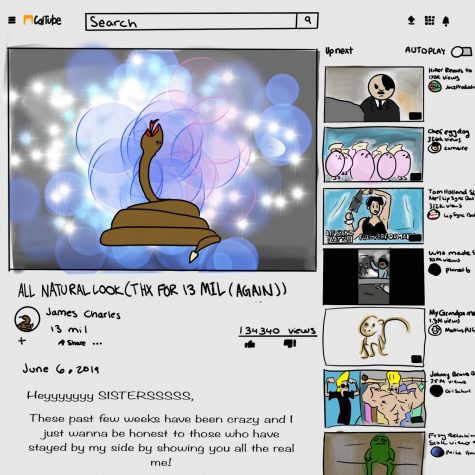District teacher strike averted
Cal High teachers hold up signs at the teacher walkout on February 28th. The teachers’ union and the district have since then settled negotiations.
The past month has been interesting for both Cal High staff and students in the wake of a possible teacher strike that appeared imminent and would have involved all 36 schools of the San Ramon Unified School District.
But on March 8 the San Ramon Valley Education Association (SRVEA), the district’s teachers union, announced that they had reached a tentative agreement with the district. The school board is expected to ratify the agreement next Tuesday.
“I’m ecstatic that the district and the union reached a tentative agreement,” said math teacher and union representative Bob Allen. “I learned a lot about the process of how the district and teachers can work together.”
Specifics of the agreement include a 4 percent ongoing base salary increase, a new salary schedule for nurses and speech language pathologists, caps on class sizes and teacher caseloads, and lower student-to- counselor and student-to-nurse ratios throughout the district.
“I am grateful to the Board of Education and both bargaining teams for the hours of collaboration that went into developing an agreement that improves the learning environment for our students and the working conditions of our educators,” Superintendent Rick Schmitt wrote in an email to parents.
The union had been negotiating the many contract items with the district since the beginning of the school year. Negotiations had become so contentious that in late February 98 percent of teachers voted to authorize a strike, which was expected to come in April.
The union was fighting for several pressing issues, including a current counselor-to-student ratio that is 1-to-500 at Cal and the three other high schools, and 1-to700 at the middle schools.
Another important issue is that all four high schools in the district share one nurse who is only onsite at Cal on Fridays.
“I had a kid have a seizure the other day but there was no nurse on site,” Dougherty Valley librarian Kerri Pike Knapp said during a March 6 parent forum while discussing the district’s 1-to-3,000 nurse to student ratio.
In addition, one of the many items staff were seeing was a salary increase. The district originally offered less than 2 percent, and then bumped its offer to 3 percent, while teachers were initially asking for 5 percent.
“[Teachers] deserve a wage that allows them to stay here,” Cal English teacher Michelle Mascote said.
She describes the difficulty of retaining good teachers and hiring new ones because of a revolving door that forces many teachers to leave the district because they can’t afford to live in the pricey East Bay.
Last year alone, more than 100 teachers left the district.
To help prevent this, the union fought for a raise for about six months before it reached an impasse with the district on Feb. 4 because negotiations were not going anywhere.
“[SRVEA] gave a very robust proposal including a salary increase but that was not at the center of our focus,” union president Ann Katzburg said at an open forum. “We wanted to make sure that our students got the services that they deserved.”
Students began seeing the effects of stalled contract negotiations last month when teachers and staff took action to make their position against the district more visible.
On February 28, teachers at Cal and across the district walked together and stood in solidarity outside the school campus. Many carried signs, reminding students of the work they do outside of their contract hours, including grading papers and writing letters of recommendation for college.
“Teachers work really hard,” said Anh Nguyen, who teaches precalculus and computer science. “In the past, the district had a small fund but now they have a lot of reserve and I feel that they don’t want to spend it on teachers.”
Nguyen’s statement was confirmed at the open parent forum at Dougherty Valley High School on March 6, when parents learned the state mandates reserves for school districts to be 2 percent, while the district has 18 percent in reserves.
The forum was largely attended by parents, as well as some students, who were eager to learn what exactly the union’s demands were.
“For the longest time, I wasn’t getting a response from my son’s counselor and I came to the conclusion that counselors don’t respond,” Monte Vista parent Sonu Bhasin said at the open forum. “But I now realize that I was mistaken because counselors have so many students on their caseload. We as parents must support the staff of our schools.”
Students also started seeing on Feb. 20 orange flyers on many teachers doors indicating that starting the next day teachers would be only available during contract hours, which span from 8:10 a.m. to 3:10 p.m.
These flyers indicated how certain out-of-contract actions that teachers usually take would be affected. This work included but was not limited to keeping classrooms open during lunch and brunch, writing letters of recommendation, and holding study sessions before and after school.
Although many Cal students were affected by teachers’ decision to only operate during contract hours, some still supported the teachers’ decision to do this because of the bigger picture and what teachers were fighting for.
“[These changes] definitely make test make-ups and asking questions during lunch or after school a little difficult, but it’s for a good reason,” sophomore Saisudeshna Kothur said. “I hope the district listens to them and changes things around here.”
Teachers had the support of many students in spite of these inconveniences.
“I’m glad teachers are standing up for what they deserve,” said junior Sakeenah Ashique, who understands why she was unable to make up one of her tests during lunch.
But now that a settlement has been reached, teachers are back to working beyond their contract hours as they had done in the past.
“This [agreement] constitutes tremendous progress,” district spokeswoman Elizabeth Graswich wrote in an email.

Ananya Nag is a news editor for The Californian. As a senior, this is her second year in Newspaper and she served as a reporter last year. Her favorite...

Eddy Cordero is a Co-Editor for photography in The Californian. He is a junior who enjoys mountain biking, skating, playing/writing music, And of course...









